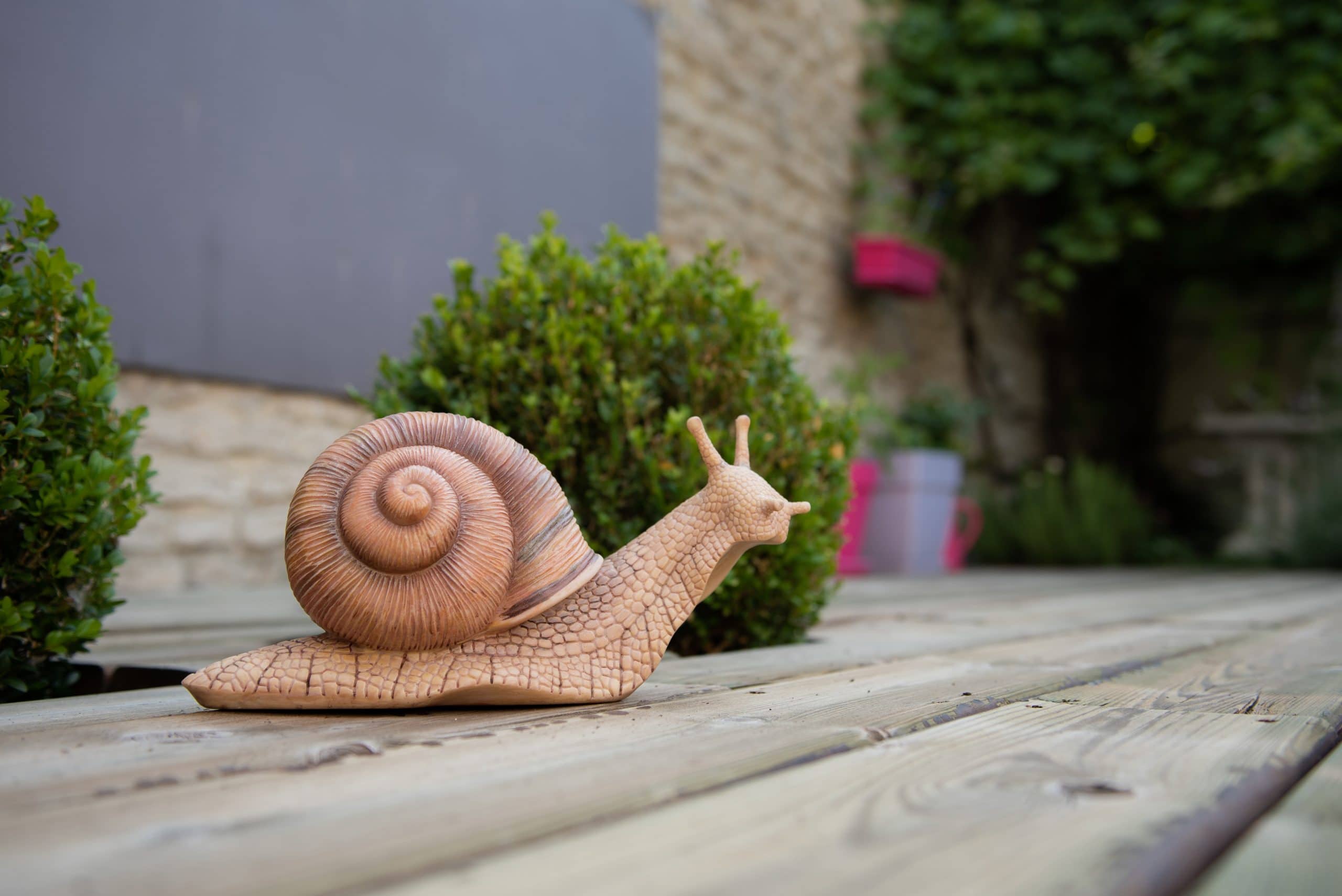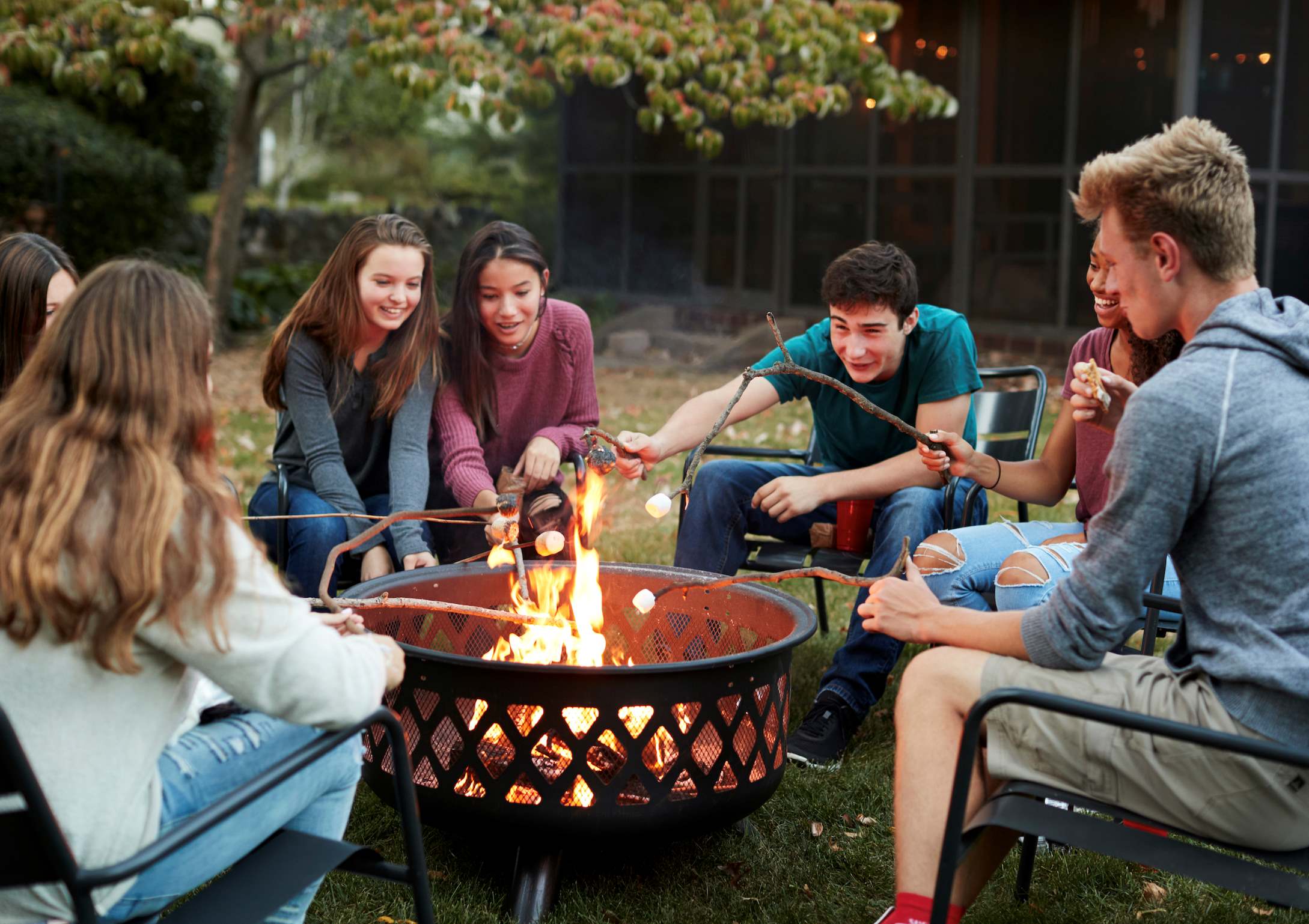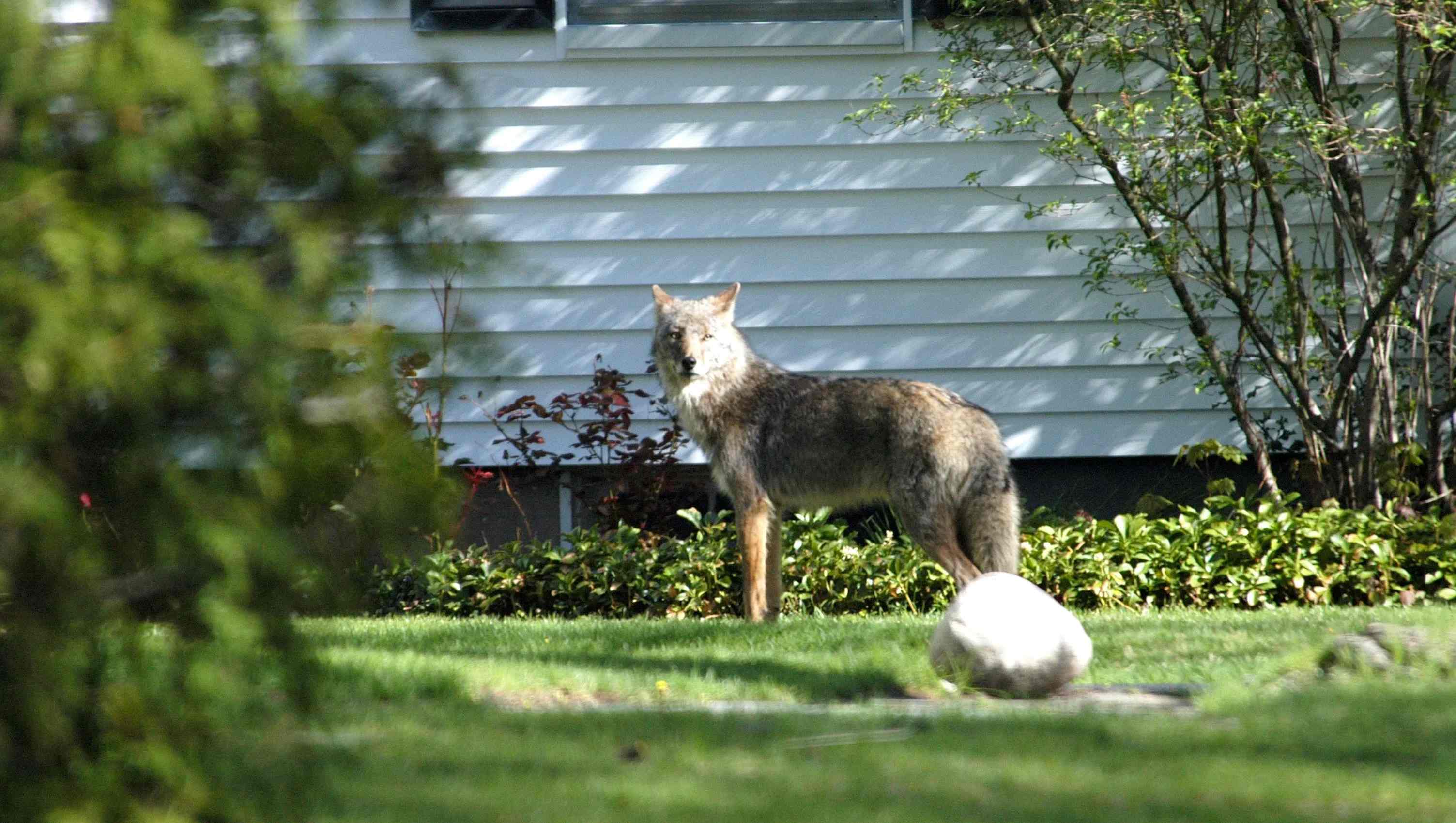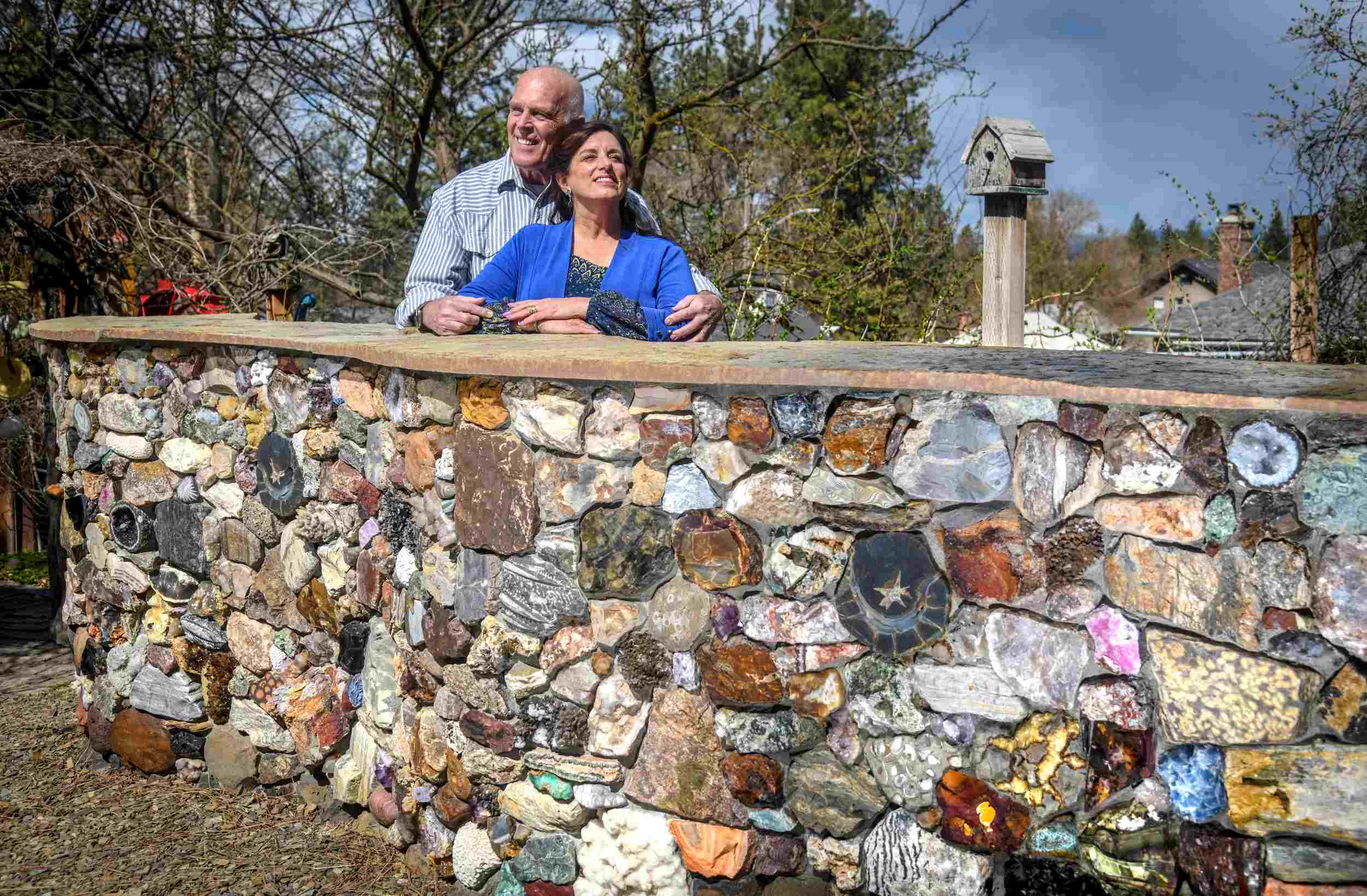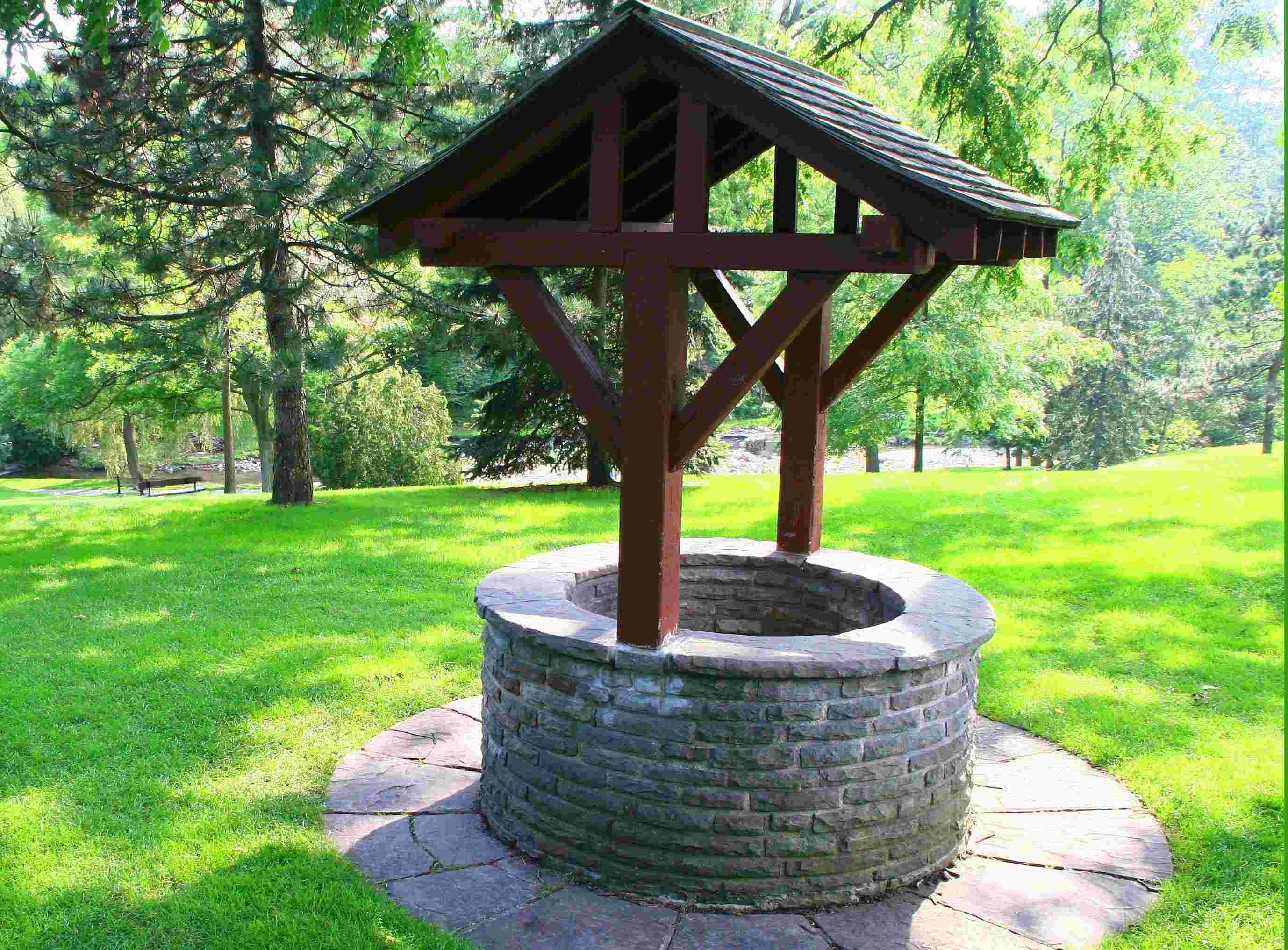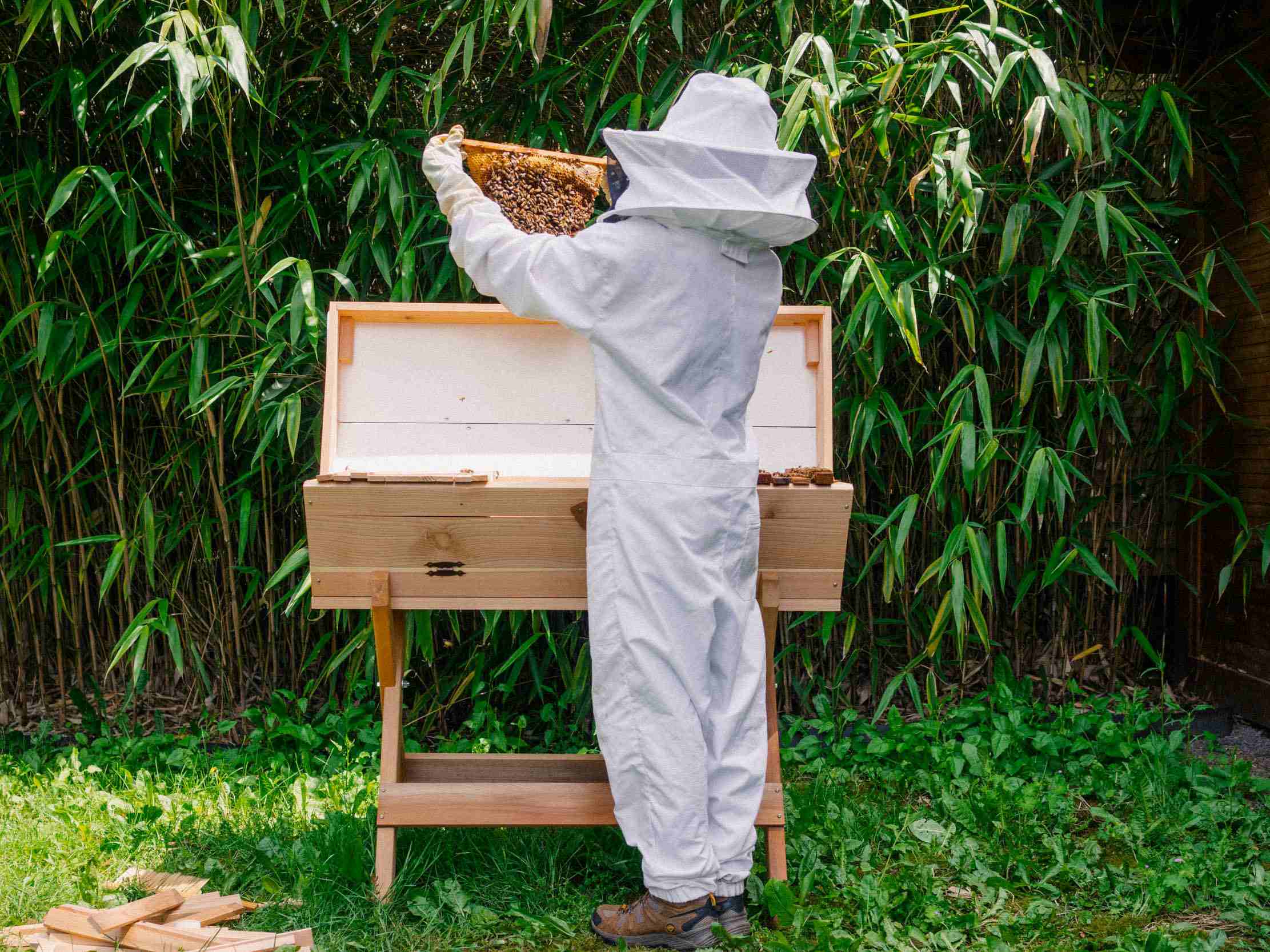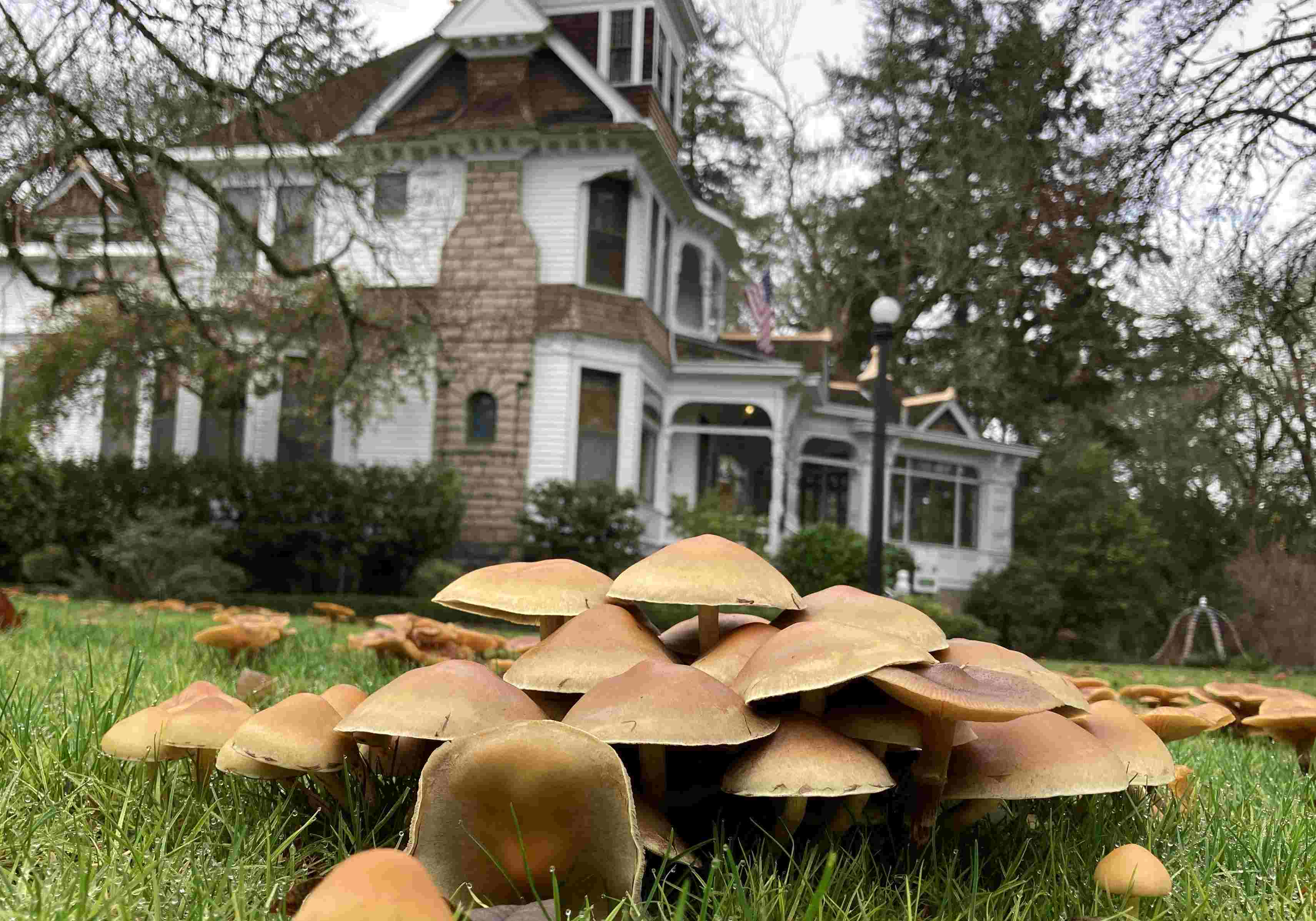Home>Gardening Tips and Tricks>How To Trap A Raccoon In Your Backyard
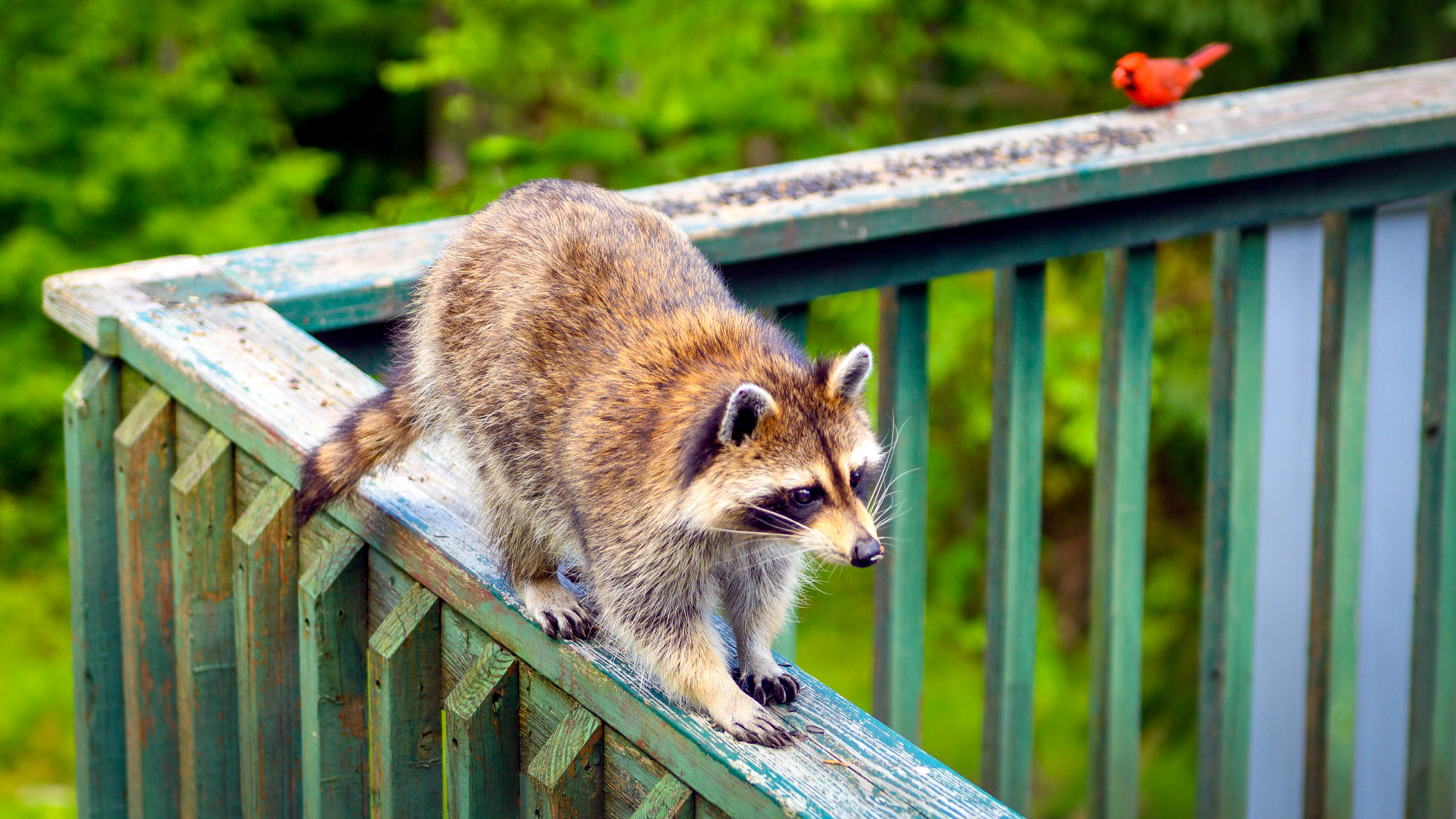

Gardening Tips and Tricks
How To Trap A Raccoon In Your Backyard
Modified: January 22, 2024
Learn effective problem-solving techniques to trap raccoons in your backyard. Discover step-by-step methods and ensure a safe and humane removal process.
(Many of the links in this article redirect to a specific reviewed product. Your purchase of these products through affiliate links helps to generate commission for Chicagolandgardening.com, at no extra cost. Learn more)
Table of Contents
Introduction
Raccoons, with their distinctive markings and mischievous personalities, are fascinating creatures to observe in the wild. However, when these clever critters invade your backyard, they can cause a range of problems, from rummaging through your trash to damaging property and potentially spreading diseases. In such cases, it may become necessary to trap and remove raccoons from your property. In this article, we will provide you with a comprehensive guide on how to trap a raccoon in your backyard.
Before we delve into the details of trapping raccoons, it is important to stress the significance of taking a humane approach. Raccoons are living beings, and while they may be causing havoc in your backyard, it is crucial to handle their removal with compassion and care. We will outline methods that prioritize the safety and well-being of both the raccoon and yourself.
Trapping a raccoon requires patience, knowledge, and the right tools. We will guide you through the steps involved in identifying a raccoon infestation and prepare you for the trapping process. We will discuss the importance of selecting a humane raccoon trap, provide insights on baiting the trap effectively, and guide you through the process of setting up the trap in your backyard.
Additionally, we will talk about the importance of checking the trap regularly to ensure the raccoon does not experience unnecessary stress or harm. Once the raccoon is successfully trapped, we will discuss the appropriate methods for relocating it to a suitable habitat. Lastly, we will provide tips on preventing future raccoon infestations so that you can maintain a peaceful and raccoon-free backyard.
By following the guidelines and tips in this article, you will be better equipped to handle a raccoon infestation in your backyard safely and humanely. Let’s get started on creating a raccoon-free environment that allows both humans and wildlife to coexist harmoniously.
Understanding raccoons
Before attempting to trap a raccoon in your backyard, it’s crucial to have a basic understanding of these creatures. Raccoons, scientifically known as Procyon lotor, are medium-sized mammals native to North America. They are highly adaptable and can be found in various habitats, from forests and wetlands to urban areas.
Raccoons have distinctive features that make them easily recognizable. They have a stocky build, with dense fur that is typically grayish-brown in color. Their most recognizable characteristic is the black mask-like markings around their eyes and the ringed tail. Raccoons also have sharp claws, dexterous front paws, and keen senses, making them excellent climbers and foragers.
These omnivorous creatures have a varied diet, which includes fruits, vegetables, insects, small animals, and even human food. They are opportunistic scavengers and have become adept at raiding garbage cans and pillaging garden crops.
Raccoons are primarily nocturnal animals, meaning they are most active during the night. Their nighttime activities can be disruptive, including disturbing trash cans, making a mess of bird feeders, and even nesting in attics or crawl spaces.
Understanding the behavior and habits of raccoons is essential in effectively trapping and removing them from your backyard. Raccoons are intelligent animals that can quickly learn to avoid traps and outsmart humans. They are cautious when approaching new objects or disturbances, so it’s important to be patient and take the necessary precautions when setting up a trap.
It is also important to note that raccoons may carry diseases, including rabies and distemper. Therefore, it’s crucial to handle raccoons safely and avoid direct contact. If you suspect a raccoon is infected with a disease, it is advisable to contact your local wildlife authorities to handle the situation.
Now that you have a better understanding of raccoons and their behavior, let’s move on to identifying signs of raccoon infestations in your backyard.
Identifying raccoon infestation signs
Being able to identify signs of raccoon infestations is crucial in determining whether trapping and removing these animals from your backyard is necessary. Here are some common signs that indicate raccoons may be present:
- Noise and activity: Raccoons are active primarily at night. If you notice scratching sounds, thumps, or rustling noises coming from your attic, chimney, or crawlspace, it could be a sign of raccoons inhabiting your property.
- Damaged property: Raccoons have a tendency to cause damage to property, such as tearing up shingles, ripping apart vents, or damaging gardens in search of food. If you notice any signs of property damage, it could be an indication of raccoon activity.
- Garbage raiding: Raccoons are notorious for rummaging through trash cans in search of food. If you consistently find your garbage cans overturned or scattered, with signs of claw marks or bite marks, it is likely that raccoons are responsible.
- Tracks and droppings: Raccoon tracks are distinct and typically show five toes with claw marks. If you notice tracks around your property, especially near garbage cans or areas where food is available, it may be a sign of raccoon presence. Additionally, raccoon droppings, known as scat, are similar in shape and size to that of a small dog and are often found in communal latrines or near food sources.
- Nesting materials: Raccoons create nests or dens to raise their young. If you come across piles of leaves, brush, or other materials that appear to be gathered for nesting purposes, it could be a sign of a raccoon den nearby.
It’s important to note that while these signs can indicate a raccoon infestation, it is best to consult with a professional wildlife removal service or local authorities to confirm the presence of raccoons and develop an appropriate strategy for their removal. Attempting to trap raccoons without proper knowledge and experience can be dangerous for both the raccoons and yourself.
Now that you are aware of the signs to look out for, let’s move on to the necessary preparations before trapping raccoons in your backyard.
Preparing for raccoon trapping
Before you begin the process of trapping raccoons in your backyard, it’s important to make the necessary preparations to ensure a safe and successful trapping experience. Here are some essential steps to follow:
- Research local regulations: Before trapping raccoons, familiarize yourself with the local laws and regulations regarding wildlife removal. Different areas may have specific guidelines or restrictions on trapping raccoons, so it’s important to ensure you are abiding by the rules.
- Choose the right time: Raccoons are most active during the spring and summer months, as they search for food and create nests for their young. It’s recommended to trap raccoons during these periods when their activity is at its peak.
- Secure food sources: Raccoons are attracted to easily accessible food sources such as garbage cans, pet food, and bird feeders. To increase the effectiveness of your trapping efforts, ensure that these food sources are securely stored or removed from your yard. This will help encourage raccoons to enter the trap in search of food.
- Prepare a holding area: Before trapping raccoons, it’s important to have a secure and well-ventilated holding area ready to transport and temporarily house the captured raccoon. This area should be well away from human activity and pets to avoid any potential conflicts or injuries.
- Wear protective gear: When dealing with raccoons, it’s crucial to prioritize safety. Wear gloves, long sleeves, and pants to protect yourself from potential scratches or bites. Raccoons may carry diseases, so taking proper precautions is essential.
- Notify neighbors: If you live in close proximity to neighbors, it may be considerate to inform them of your raccoon trapping efforts. This allows them to take precautionary measures and avoid any unintentional contact with the trapped raccoon.
By following these preparation steps, you can ensure that you are fully equipped and ready to proceed with the raccoon trapping process. Taking the time to adequately prepare will not only increase the chances of successfully trapping raccoons but also ensure the safety and well-being of both the animal and yourself.
Now that you are prepared, let’s move on to the selection of a humane raccoon trap in the next section.
Choosing a humane raccoon trap
When it comes to trapping raccoons in your backyard, it is essential to choose a humane trap that effectively captures the raccoon without causing harm. Humane traps are designed to safely capture the raccoon without injuring it and allow for easy release at a different location. Here are some factors to consider when choosing a humane raccoon trap:
- Size and capacity: Raccoon traps come in different sizes and capacities. It is important to choose a trap that is large enough to accommodate the average size of a raccoon. Opt for a trap with dimensions that allow the raccoon to comfortably enter and move around inside the trap.
- Material and durability: Look for traps made from sturdy materials like steel or galvanized wire mesh. Raccoons are strong animals, and a durable trap is essential to prevent them from escaping or damaging the trap during their capture.
- Door mechanism: There are different types of door mechanisms available, including gravity-based doors and spring-loaded doors. Both options can be effective, but ensure that the trap you choose has a reliable mechanism that securely closes upon activation, preventing the raccoon from escaping.
- Triggering mechanism: Consider traps with sensitive and efficient triggering mechanisms. Ideally, the trap should be triggered when the raccoon enters the trap in search of the bait. Look for traps that require minimal force or contact to activate the trap door.
- Protective features: Some traps may have additional features to protect both the raccoon and the person setting up the trap. This could include hand guards or a protective cage around the trap door, reducing the risk of accidental contact or injury.
- Easy release design: A humane trap should have a design that allows for safe and easy release of the captured raccoon. Look for traps with large-release doors or mechanisms that allow you to open the trap from a safe distance to avoid direct contact with the raccoon.
Remember, the goal is to safely capture and relocate the raccoon without causing any harm. Always prioritize the well-being of the raccoon and follow the guidelines and instructions provided by the trap manufacturer for the most effective and humane trapping experience.
Now that you have selected a suitable humane raccoon trap, the next step is to bait the trap effectively. We will discuss this in detail in the following section.
Baiting the raccoon trap
Baiting the raccoon trap is a critical step in successfully capturing the raccoon. By using the right bait, you can entice the raccoon to enter the trap, increasing the chances of a successful trapping. Here are some tips for effectively baiting the raccoon trap:
- Choose the right bait: Raccoons have a varied diet and are attracted to a range of foods. Opt for strong-smelling and aromatic baits that will catch the raccoon’s attention. Some popular bait options include canned fish (such as tuna or sardines), cat food, marshmallows, or sweet fruits like watermelon or grapes. Experiment with different bait options to see which one works best for your situation.
- Placement of the bait: Place the bait at the back of the trap, near the triggering mechanism. This will encourage the raccoon to fully enter the trap to access the bait, increasing the chances of triggering the trap door.
- Use a trail of bait: To further entice the raccoon into the trap, consider placing a trail of bait leading to the trap entrance. This will create a clear and inviting path for the raccoon to follow, increasing the likelihood of successful capture.
- Avoid direct contact: When handling bait, it’s important to avoid direct contact to prevent leaving behind any human scent. Raccoons are cautious creatures and may hesitate to approach the trap if they detect human scent. Use gloves or tongs to handle and place the bait.
- Protect the bait from rain or moisture: Raccoons are less likely to be attracted to wet or spoiled bait. Ensure that the bait is protected from rain or moisture by covering it with a small plastic container or placing it inside a mesh bag secured to the trap.
- Monitor and replace bait regularly: Check the bait regularly to ensure it is fresh and not spoiled. Raccoons have a keen sense of smell, and they are more likely to be attracted to fresh, appetizing bait. Replace the bait as needed to maintain its effectiveness.
Remember, every raccoon may have different preferences when it comes to bait. Be patient and persistent, and continue experimenting with different bait options until you find the one that works best for your situation.
Now that the trap is baited, it’s time to move on to the next step: setting up the raccoon trap. We will guide you through this process in the following section.
Setting up the raccoon trap
Setting up the raccoon trap properly is crucial for a successful capture. A well-placed and properly prepared trap increases the chances of luring the raccoon inside and triggering the trap door. Follow these steps to set up the raccoon trap effectively:
- Choose an appropriate location: Select a suitable location for the trap where raccoon activity has been observed or is suspected. This can be near areas where you’ve noticed signs of raccoon presence, such as damaged property or frequent raccoon sightings.
- Secure the trap: Ensure that the trap is secure and stable, so it does not tip over or move when a raccoon enters. Place the trap on level ground, and if necessary, use stakes or additional weights to prevent it from being moved or knocked over unintentionally.
- Position the trap strategically: Set the trap in a location where the raccoon is likely to pass by or enter, such as near access points or areas where the raccoon can easily reach the bait, such as fence openings or tree branches.
- Camouflage the trap: To make the trap less conspicuous and more inviting to the raccoon, consider camouflaging it with natural materials. Use branches, shrubs, or leaves to conceal the trap and create a more natural environment for the raccoon.
- Ensure proper clearance: Make sure there is enough clearance for the trap door to close once the raccoon triggers it. Trim any obstructing branches or vegetation that may interfere with the trap’s proper functioning.
It’s important to remember to follow local regulations and guidelines while setting up the trap. Some areas may require permits or have specific rules regarding traps. Familiarize yourself with these regulations to ensure you are acting within the law.
Once the trap is set up, check it regularly and monitor it from a safe distance. It’s essential to regularly inspect the trap to avoid unnecessary stress or harm to the captured raccoon. In the next section, we will discuss the importance of checking the trap regularly and the steps to take once the raccoon is captured.
Checking the trap regularly
When trapping raccoons in your backyard, it is crucial to check the trap regularly to ensure the well-being of the captured raccoon and to prevent unnecessary stress or harm. Regular monitoring of the trap allows you to take appropriate actions promptly. Follow these guidelines for checking the trap regularly:
- Establish a schedule: Set a schedule to check the trap at least once every few hours during the daytime. Raccoons are primarily active at night, so it’s essential to check the trap during daylight hours when they are likely to be present. Adjust the frequency of checks based on local regulations and weather conditions.
- Observe from a safe distance: When checking the trap, observe from a safe distance to avoid direct contact or startling the raccoon. Stay calm and quiet to reduce stress for both the trapped raccoon and yourself.
- Be prepared: When checking the trap, have all the necessary tools and equipment ready in case you need to proceed with the next steps, such as relocation or releasing the raccoon.
- Handle with care: If the trap has captured a raccoon, approach the trap cautiously and slowly. Avoid making sudden movements or loud noises that may startle the raccoon. Remember, raccoons can bite and scratch when they feel threatened, so it’s important to handle the situation with care.
- Take appropriate action: Depending on your intentions and local regulations, determine the appropriate action to take once the raccoon is captured. If you plan to relocate the raccoon, do so in accordance with local guidelines and regulations. If you wish to release the raccoon onsite, ensure it is done in a suitable area far away from human dwellings.
- Reset the trap: After checking and addressing the situation with the captured raccoon, reset the trap if required. Clean and sanitize the trap thoroughly to remove any scent or residue that may deter future raccoons from entering.
Remember, trapping raccoons requires care and respect for the animal. Ensure their safety and well-being throughout the process, and handle them appropriately when checking and dealing with the trap. By checking the trap regularly, you can address any captured raccoons promptly and minimize any harm or stress caused during the trapping process.
In the next section, we will discuss the steps to take after capturing a raccoon, whether you choose to relocate it or release it onsite.
Relocating the trapped raccoon
Once you have successfully trapped a raccoon in your backyard, you may choose to relocate it to a more suitable habitat. Relocation should be done in accordance with local regulations and guidelines, ensuring the safety of both the raccoon and the environment. Follow these steps for a safe and responsible raccoon relocation:
- Identify a suitable location: Research and identify a suitable relocation site that provides adequate resources and a suitable habitat for the raccoon. The location should be far away from human dwellings to minimize the chances of the raccoon returning to your property.
- Contact local authorities: Before relocating the raccoon, it is advisable to contact your local wildlife authorities and seek guidance. They can provide valuable information on permitted relocation areas and any specific requirements or restrictions in your region.
- Transport the raccoon: When transporting the trapped raccoon, ensure its safety and minimize stress. Use a secure and well-ventilated transport carrier or a sturdy, covered box to safely contain the raccoon during transportation.
- Release in a secluded area: Once at the relocation site, choose a secluded area away from human activity to release the raccoon. Open the trap door or remove the cover of the transport carrier, allowing the raccoon to exit at its own pace. Avoid any sudden movements or loud noises that may startle the raccoon.
- Observe from a distance: After releasing the raccoon, step back and observe from a safe distance. Ensure the raccoon has acclimated and safely moved away from the release area before leaving. This will give the raccoon the best chance of establishing itself in its new environment.
It is important to note that not all regions allow the relocation of raccoons due to the risk of spreading diseases or the potential disruption of local ecosystems. In such cases, it is recommended to contact professional wildlife removal services who can handle the raccoon in accordance with the appropriate regulations.
By following these guidelines and prioritizing the safety and well-being of the raccoon, you can ensure a responsible and humane relocation process. Now that the raccoon has been dealt with, let’s move on to discussing methods for preventing raccoon infestations in the future.
Preventing raccoon infestations in the future
After successfully trapping and removing a raccoon from your backyard, it’s important to take preventive measures to minimize the likelihood of future infestations. By implementing certain strategies, you can make your property less attractive to raccoons. Here are some effective methods for preventing raccoon infestations:
- Secure garbage cans: Raccoons are attracted to easily accessible food sources, such as garbage cans. Invest in raccoon-proof garbage cans with secure lids or use bungee cords to hold lids down firmly. Placing garbage cans inside a shed or garage can also deter raccoons from accessing them.
- Remove outdoor food sources: Minimize raccoon access to potential food sources in your yard. Bring in pet food bowls, secure bird feeders, and harvest ripe fruits and vegetables promptly. By eliminating these food sources, you reduce the likelihood of attracting raccoons.
- Seal off entry points: Inspect your property for any potential entry points, such as gaps or holes in the walls, roofs, or foundation. Seal off these openings with sturdy materials, such as steel mesh or caulk, to prevent raccoons from entering and nesting in your home.
- Install motion-activated lights and sprinklers: Raccoons are nocturnal animals that prefer to avoid well-lit areas. Install motion-activated lights around your property to deter raccoons. Additionally, motion-activated sprinkler systems can startle and discourage raccoons from entering your yard.
- Trim tree branches: Raccoons are excellent climbers and can access your property by using overhanging tree branches. Trim branches that are close to your house or provide easy access to rooftops or attics.
- Secure compost bins: If you have a compost bin in your yard, ensure that it is securely covered and sealed to prevent raccoons from accessing it. Avoid adding food scraps or other raccoon-attracting materials to the compost.
- Eliminate water sources: Raccoons are also attracted to sources of water. Repair any leaky outdoor faucets and ensure containers such as bird baths or pet water bowls are emptied overnight to discourage raccoons from lingering in your yard.
- Work with wildlife professionals: If you continue to experience recurring raccoon infestations despite preventive measures, consider seeking the assistance of professional wildlife removal services or contacting your local wildlife authorities for guidance on long-term raccoon management strategies.
By implementing these preventive measures, you can significantly reduce the chances of future raccoon infestations in your backyard. Creating an environment that is less appealing to raccoons will help maintain a harmonious coexistence between humans and wildlife.
As responsible homeowners and stewards of the environment, it’s our duty to protect wildlife while also safeguarding our properties. By following these tips and being proactive, you can create a raccoon-free environment and enjoy a peaceful and thriving backyard.
Conclusion
Dealing with a raccoon infestation in your backyard can be challenging, but by following humane practices and implementing preventive measures, you can effectively trap and remove these critters. Understanding raccoon behavior, identifying signs of infestation, and preparing for trapping are essential initial steps. Choosing a humane trap and baiting it correctly will increase your chances of capturing the raccoon safely.
Setting up the trap in the right location and checking it regularly is crucial to ensure the well-being of the trapped raccoon. If you choose to relocate the raccoon, do so responsibly and within the regulations of your local authorities. Taking preventive measures such as securing garbage cans, eliminating outdoor food sources, and sealing off entry points will help prevent future raccoon infestations.
Remember, when dealing with raccoons, it’s important to prioritize their well-being and safety, as well as your own. If you encounter challenges or feel uncertain about raccoon removal, it is best to seek professional assistance.
By approaching raccoon trapping with compassion, knowledge, and preparedness, you can effectively tackle a raccoon infestation and create a raccoon-free environment in your backyard. With these guidelines in mind, you can enjoy your outdoor space free from raccoon-related troubles and maintain a harmonious coexistence between humans and wildlife.
